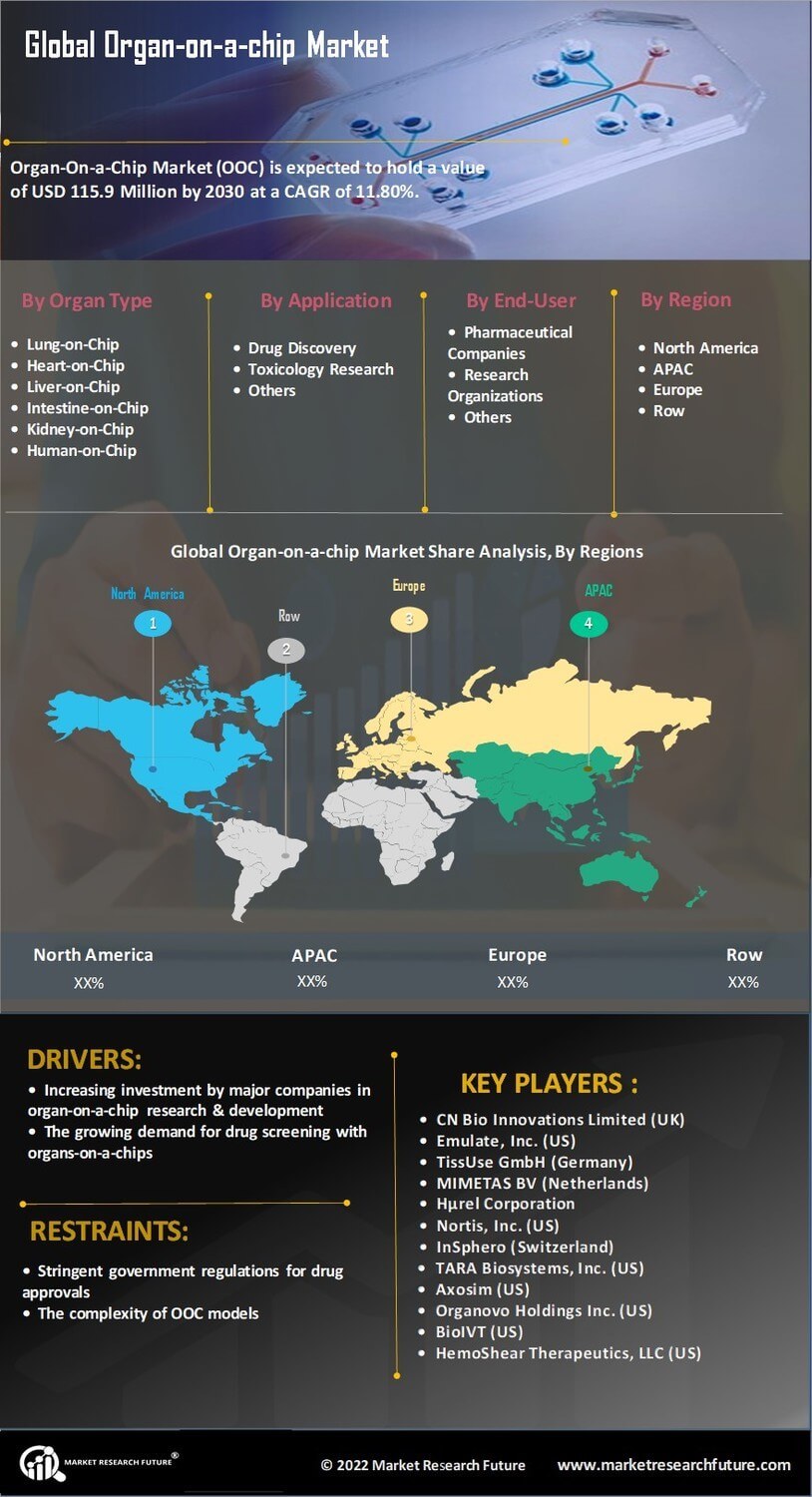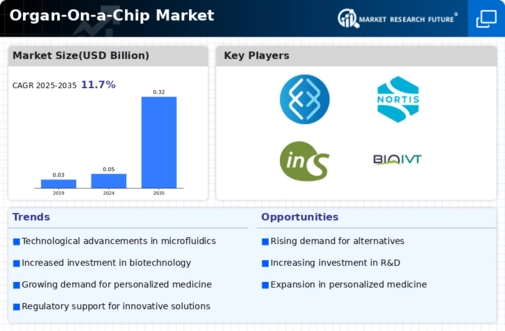Organ on chip Market Summary
As per Market Research Future Analysis, the Global Organ-On-a-Chip Market is projected to reach USD 0.23 Billion by 2032, growing at a CAGR of 11.7% from 2023 to 2032. Organs-on-chips (OOCs) are innovative devices that replicate human organ functions using live human cells in a controlled environment. The market is currently limited due to the ongoing research and development phase, but increasing collaborations between pharmaceutical companies and universities, along with advancements in organ-specific models, are expected to drive growth. Key factors influencing market expansion include reduced drug development costs and increased funding from various entities. The market is characterized by significant investments in R&D and a growing demand for drug screening solutions.
Key Market Trends & Highlights
The Organ-On-a-Chip market is witnessing significant growth driven by technological advancements and strategic collaborations.
- Market size expected to reach USD 0.23 Billion by 2032; CAGR of 11.7% during 2023-2032.
- Lung-on-Chip holds approximately 20% market share as of 2018; largest segment in the market.
- Major companies like CN Bio secured $21 million in funding for OOC development in April 2024.
- Increasing government initiatives and funding for OOC R&D, exemplified by InSphero's $10 million grant in 2018.
Market Size & Forecast
| Market Size | USD 0.23 Billion by 2032 |
| CAGR | 11.7% (2032-2032) |
| Largest Regional Market | Americas |
Major Players
CN Bio Innovations Limited (UK), Emulate, Inc. (US), TissUse GmbH (Germany), MIMETAS BV (Netherlands), Hµrel Corporation, Nortis, Inc. (US), InSphero (Switzerland), TARA Biosystems, Inc. (US), Axosim (US), Organovo Holdings Inc. (US), BioIVT (US), HemoShear Therapeutics, LLC (US)















Leave a Comment